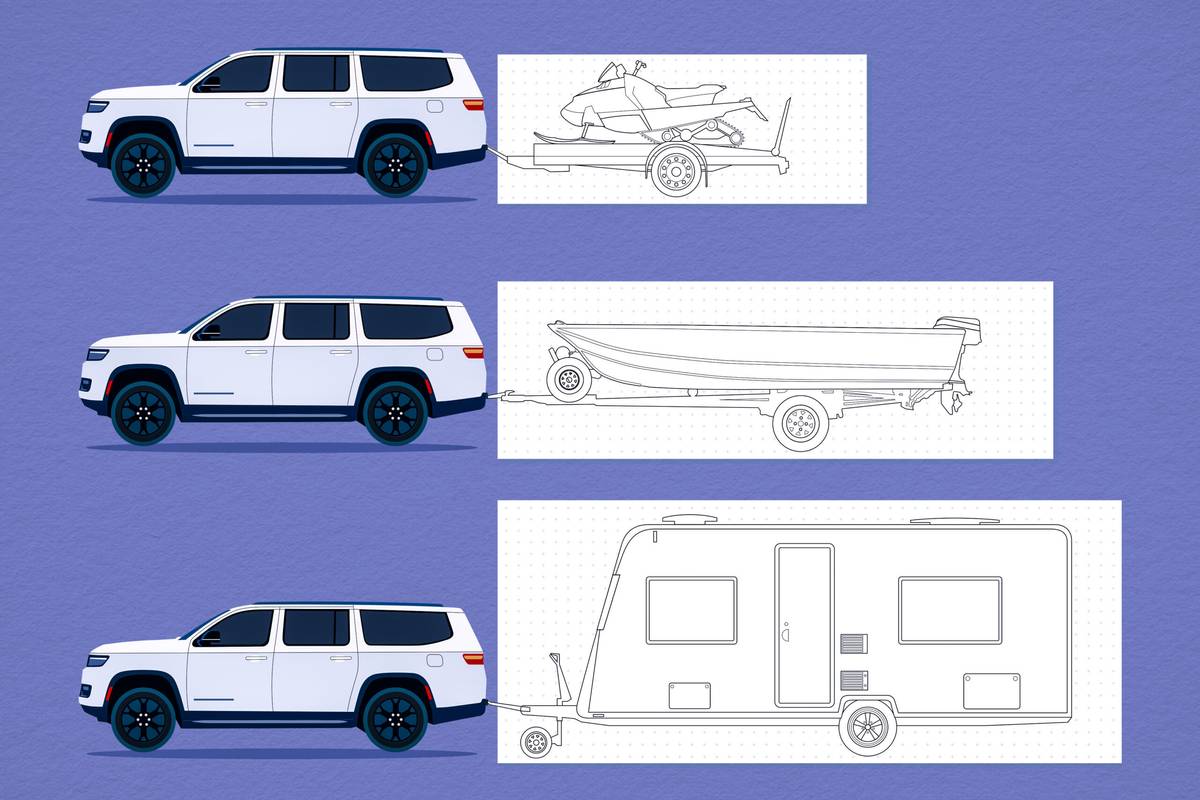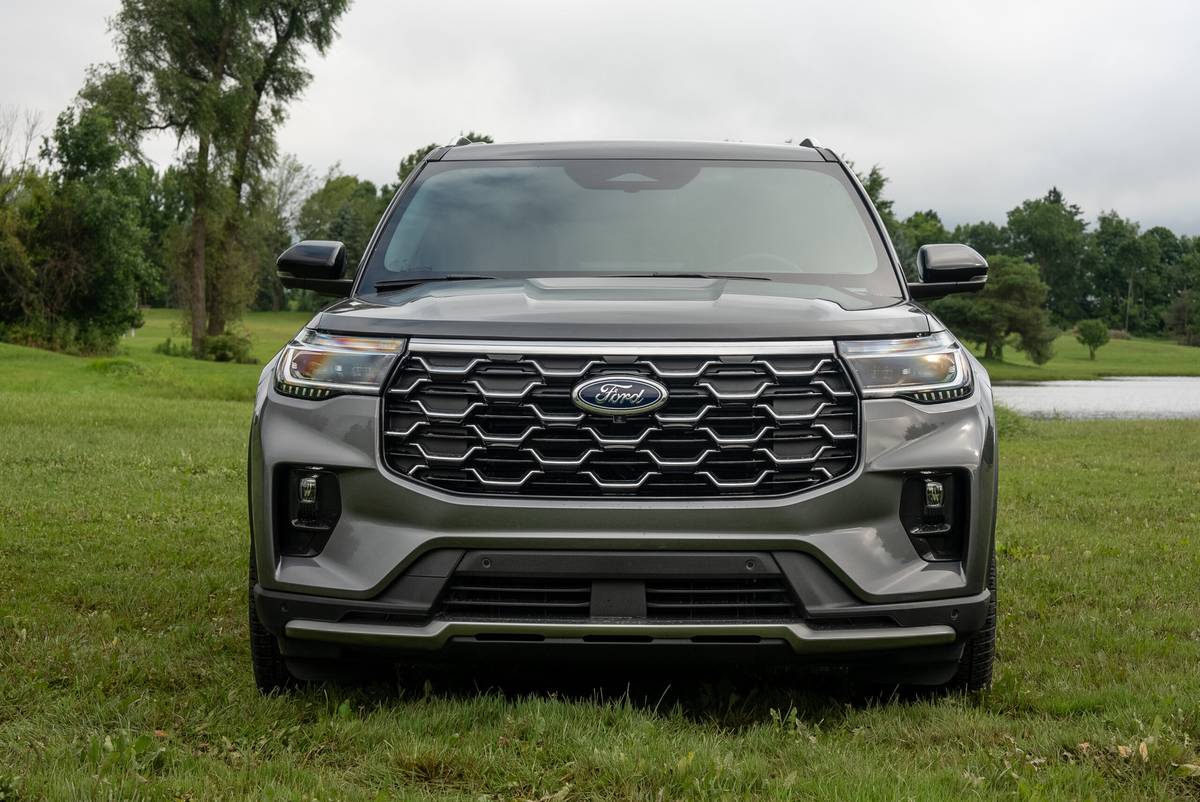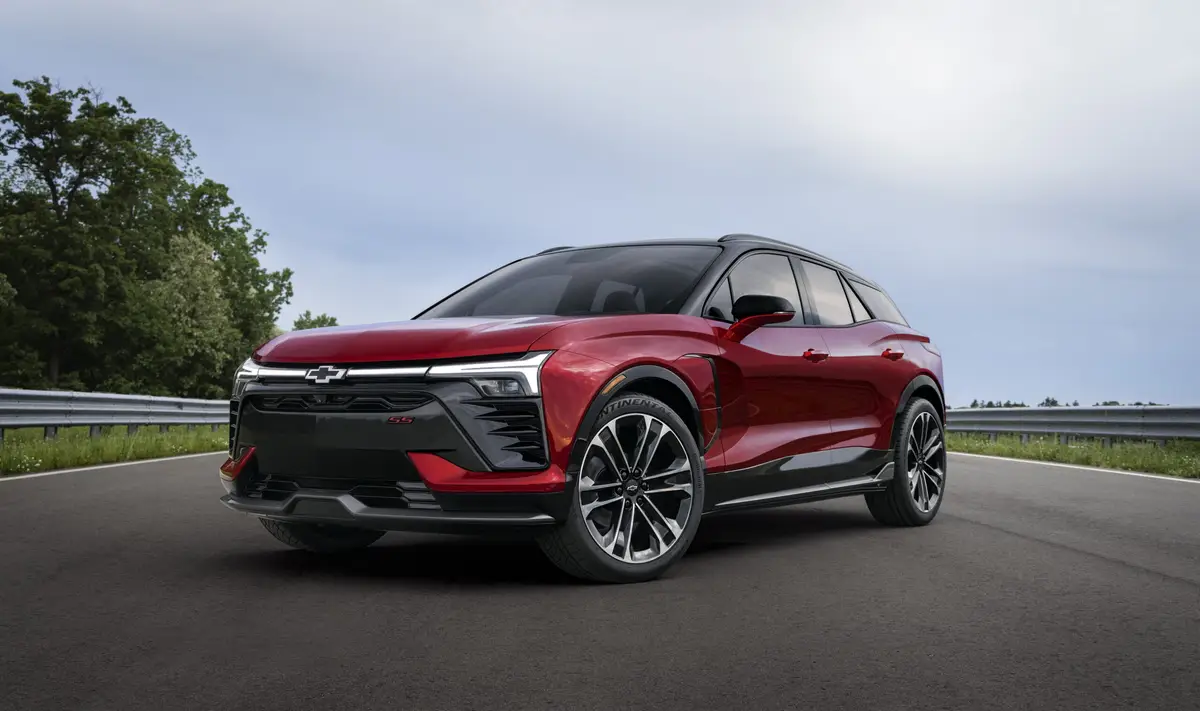2012 Ford F-150 SVT Raptor Off-Road Trail Test
We have to admit it’s a little confusing. First, SVT goes to all the trouble to turn the new Ford F-150 into one of the world’s most capable desert-running full-size trucks. Sure, it took brand-new heavy-duty, long-travel suspension components to make it happen, and SVT was investing all this time and money to be the instant leader in a segment where really no one cared to be, but that didn’t matter. To its credit, SVT came out of the gate full speed, never looking back.
But then something happened. In fact, many folks in the media said a pre-running pickup truck that you can beat up over rutted dirt roads and lumpy sand washes was fine, but why shy away from real four-wheel-drive prowess like the Ram Power Wagon has? Is that why you didn’t make a serious 4×4, they prodded. After all, they said, many more people use their 4×4 switch or lever or button to go slow — be it on a trail, to the cabin or for better pulling power — than they do blasting through remote open desert.
Some of the hardcore four-wheeling journalists and consumer critics said the SVT Raptor was a good niche vehicle, but with an open diff on such a big truck, it really can’t be called a very good off-road vehicle. So that got the SVT engineers thinking, “What if?”
Eventually, that “what if” turned into the 2012 Ford F-150 SVT Raptor, which is pretty much identical to the 2011 model except for a new Torsen limited-slip differential for the front and a new front camera in the grille.
We’ve already noted some of the pricing and U.S. sales figures in a previous post, so here we will talk specifically whether these slight additions make the Raptor as powerful going slowly through the rocks as it is going like a bat out of hell through the desert.
Again, to its credit, Ford didn’t shy away from this challenge and took a small group of journalists to the ultimate rock-crawling playground, in the hills in and around Moab, Utah. It’s an area famous for a certain type of geological rock, called slickrock by the locals, that feels like 100-grit sandpaper to the touch and provides an amazing amount of traction for big-tired Jeeps and four-wheelers. (The name slickrock was given to these formations in the 1800s when the only mode of transportation was horseback, and shoed and unshoed horses alike would skate on the rocks like they were made of ice. Many a bank robber successfully hid from a posse in these hills just for that reason, we’re told.)
At the parking lot at the beginning of Hell’s Revenge trail, we could air down the 35-inch BFGoodrich all-terrain tires between 15 and 18 pounds per square inch, basically giving us 33-inch tires with a nice side bulge. Locked in low range and creeping in 1st gear, the extra grab from each tire was going to be needed. In front of us was a narrow ridge of slickrock, climbing onto a razorback just barely wider than the Raptor itself.
After everyone got moving comfortably on the trail, thanks in part to our trail leader and Moab native Dan Mick, we settled in for hour after hour of steep hill climbs, narrow ledge crawls and unnerving side hill balancing acts, sometimes just 10 feet to the sandy bottom of the rock wall. Other times we were about 300 feet above the Colorado River, with the vertical face of the cliff just off the side of our sidewalls.
All of our Raptors were SuperCab models to keep the wheelbase as short as possible because many of the obstacles on Hell’s Revenge deal with climb rock faces. It didn’t take long for several of our car-loving trail drivers to figure out that if you approach a rock face at a perpendicular angle, you’ll likely scrape the bumper or front tow hook. But if you approach the steep face at an angle, the flex of the suspension and traction at all four corners is the only way to navigate that section of steep trail.
In fact, it was only during these moments that the full benefits of the front Torsen were fully seen. (Actually, felt from the driver’s seat.) The rest of the time, the front limited-slip diff was invisible. We were told this was because, unlike other race-tuned Torsens, Ford set the preload of the differential to zero so there would be very little detectable feedback when driven normally. However, when sensing slip at high or slow speed, the helical gears inside the diff ramp up on themselves and basically lock up at a given point to transfer torque from the slipping front tire to the tire with traction.
As you might imagine, on the steep hill climbs and off-camber rock faces, the front Torsen gave us all the front grip we could handle. Naturally, many of our climbs required us to pull the four-wheel-drive selector out to engage the rear locker, and truthfully, we probably would have been just fine with most of the trail challenges simply with the rear locker. But, as our wise trail leader reminded us, very few people get in trouble in Moab by having too much traction.
So we attacked the six-mile trail meandering over rocks and navigating through dry washes and onto slab surfaces as big as a shopping mall, all the while in low range speeding along at about 1 or 2 mph. We snaked through tree shrubs and even made our way into deep “bathtubs” where wind and rain had carved out truck-sized holes in the rock that allowed us to dip over the lip on one side, disappear into a 20-foot hole, then reappear on the other side as if we were climbing out of a grave. If it weren’t for the darkened tracks on the trail — from the hundreds of vehicles that come this way every year, each one leaving a tiny amount of tire rubber on the ground — no one would believe that this vehicle, let alone a full-size pickup truck, could enter the pit.
Another particularly intimidating obstacle came at our lunch stop. Not only did we get to see some stunning radio-controlled helicopter acrobatics (our hosts invited them along to shoot video of us at various stops), but we got to watch a masterfully driven Raptor execute a flawless run up Hell’s Gate, a narrow wedge of rock that takes a delicate throttle and supernatural tire placement to keep from tipping over or wedging your vehicle sideways. The Raptor’s (and driver’s) performance was impressive.
Our favorite challenge, though, came after the snaking part of Hell’s Revenge where the trail winds around various bathtubs until you come to Dragon’s Back. As the name implies, it is a narrow ridge of rock with 100-foot drops on both sides, and you need to put your tires on either side of the dragon’s back ridge. And to complicate things, the ridge starts over a blind drop-off where you have to make a gentle left turn. At night, the darkness would be paralyzing, but even during the day it was a nerve-wracking panic attack of a drive.
Still, this was the perfect situation to highlight one of Ford’s new options, the front-mounted camera. As we pulled up to the ledge, we saw that we needed to adjust our front tires slightly to the left then slowly proceed with the ridge between the blue lines. It was a little comforting once we got over the initial discomfort of not looking out the front window while driving. It’s worth mentioning that we’d normally not risk doing a trail like this without designated spotters to let us know where to turn and where to put the tires, but the camera seemed to act like a good spotter.
It does take some effort to remember you have the camera, unless it’s absolutely required. In some ways, it is just like using the rear camera only when hooking up a trailer or backing into a parking space. But on our trail drive, having the front camera turned on so that it always came on at speeds slower than 15 mph — which on our trail was all the time — was a nice added piece of information to keep our tires pointed in the right direction and on top of the right rocks. Visibility was quite good, with a healthy wide-angle aspect to the lens. Still, it gives you a clear idea of exactly what the front tires will make contact with in the near (or very near) future.
The only damage to our vehicle was some slight scratches to the tailpipe and a few small scrapes to the side steps. With that said, we did notice the Raptor may not have been the best vehicle for this trail, given that just about everyone put some good scratches into the rocks with the rear tow hooks on several of the rock climbs. (Some just couldn’t get the hang of taking the rock faces at an angle).
The final obstacle of the trail was a polished off-angle rock slab called Tip Over Challenge. The 20-yard section of rubber-rubbed rock slopes off to the right and has naturally formed grooves in the face that are just the right size to grab and twist at vehicle tires. At different points during the short climb (and it doesn’t matter what type of tire you have), you’ll find yourself steering to the left, wanting to climb in that direction, but sliding and slipping off to the right. The worst thing you can do at that moment is let off the throttle. The second-worst thing you can do is give too much throttle. So you modulate, fight your instincts, feather the throttle a little, then hunt for a touch more traction by slowly moving the steering wheel from right to left, all the time sliding deeper and deeper to the right. If you’re doing it right, you’ll feel one of the tires grab and give you a boost while another grabs a foothold and pulls you toward the large rock face up the hill. Then, right before you hit the outcropping much farther to the left than you think you should be, you turn to the right and climb off the slope.
Our guess is with more tire pressure, or without the Torsen front locker, or with a lesser driver, any one of those variables could have sent us over the edge, rolling into the waiting riverbed. Thankfully nothing bad happened.
There’s no doubt that a Power Wagon, with its sway bar disconnects and front and rear lockers, would have done at least as well. Or it’s quite possible a Baja Series Toyota Tacoma, with its rugged frame and suspension, could have survived this trail as well. But given that fact many wouldn’t have put the 2011 Raptor in their company on this type of trail last year, this a particularly impressive feat. We knew the Raptor was good for desert-running off-road driving, but now it seems to be the king in all types of off-road terrain. We’re even told it is becoming famous for its winter driving prowess as well, though we’re not too sure about the BFG all-terrain as a snow or all-weather tire. But that debate is for another day.
For this test, the score at the end of this trail ballgame was SVT Raptor 8 (we had eight trucks start the trail and all eight finished without drama), Hell’s Revenge 0.

Featured stories



